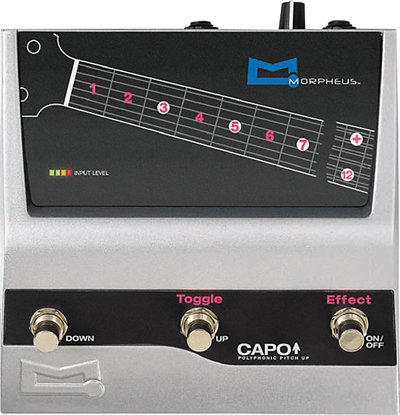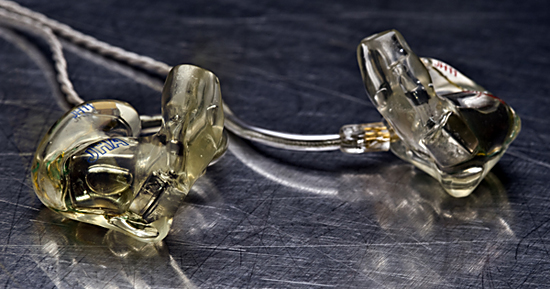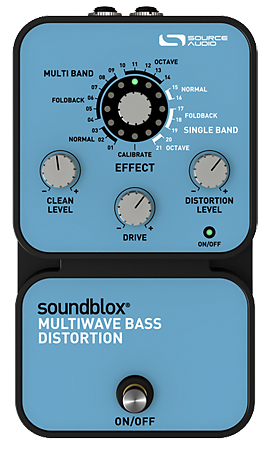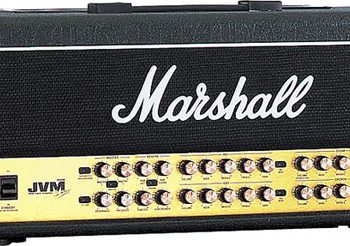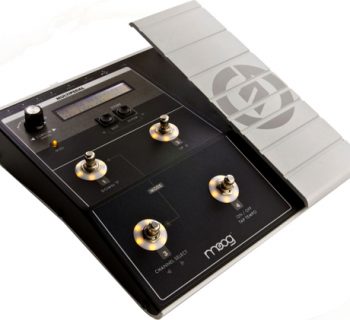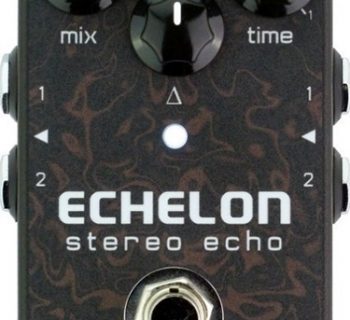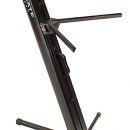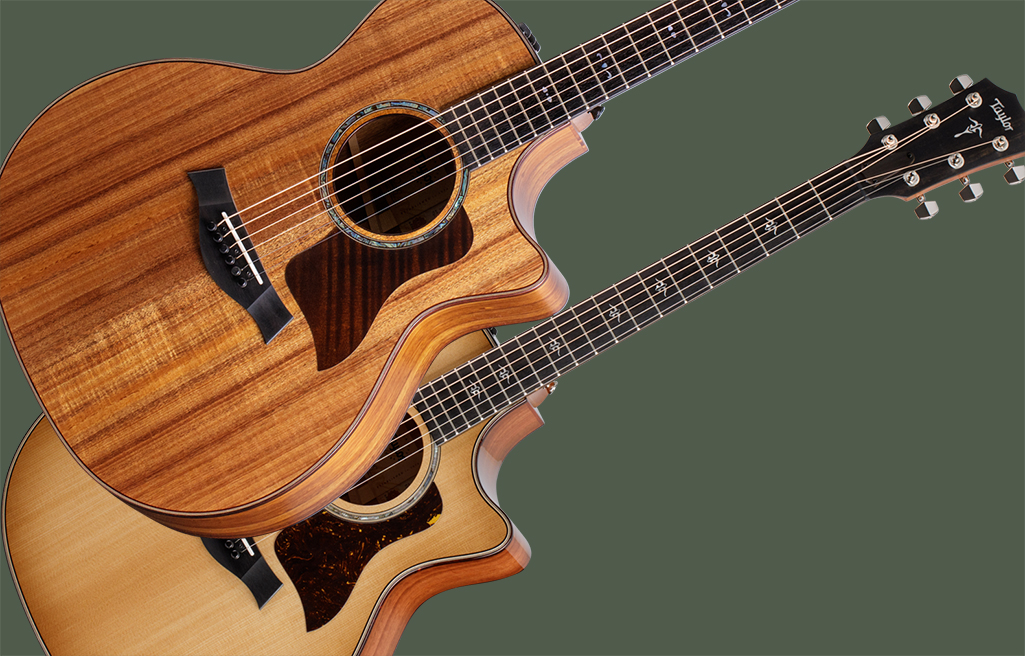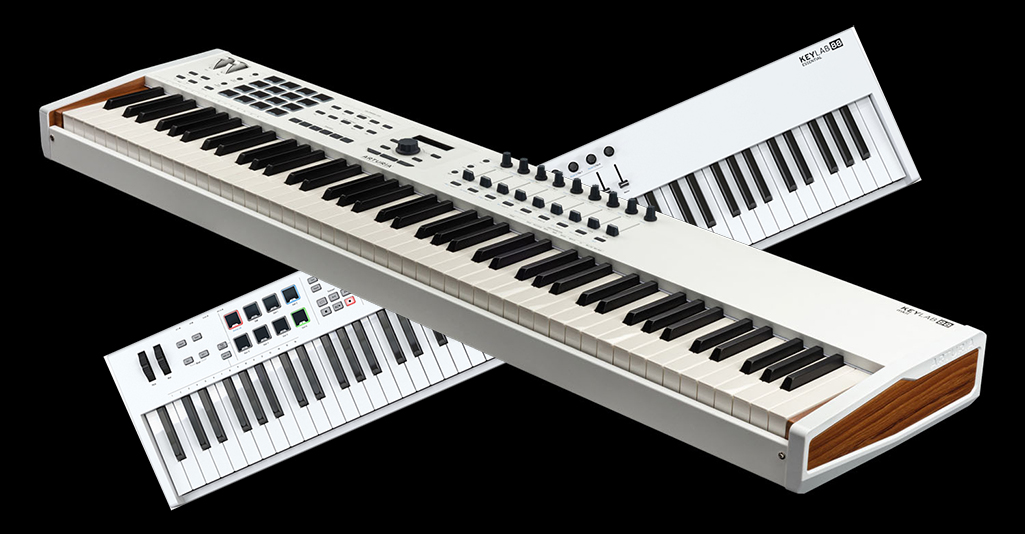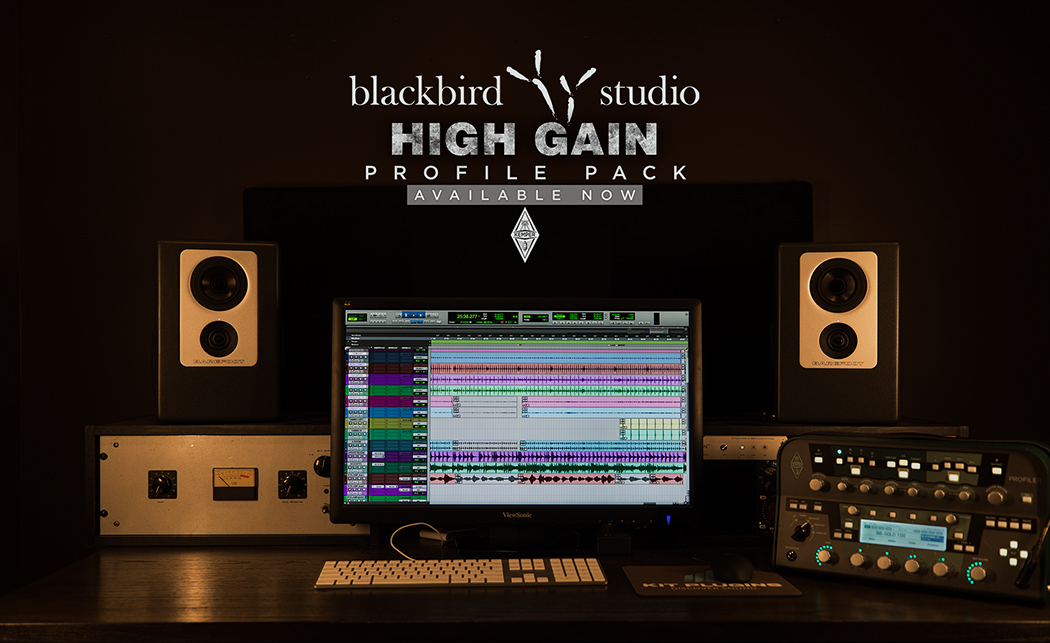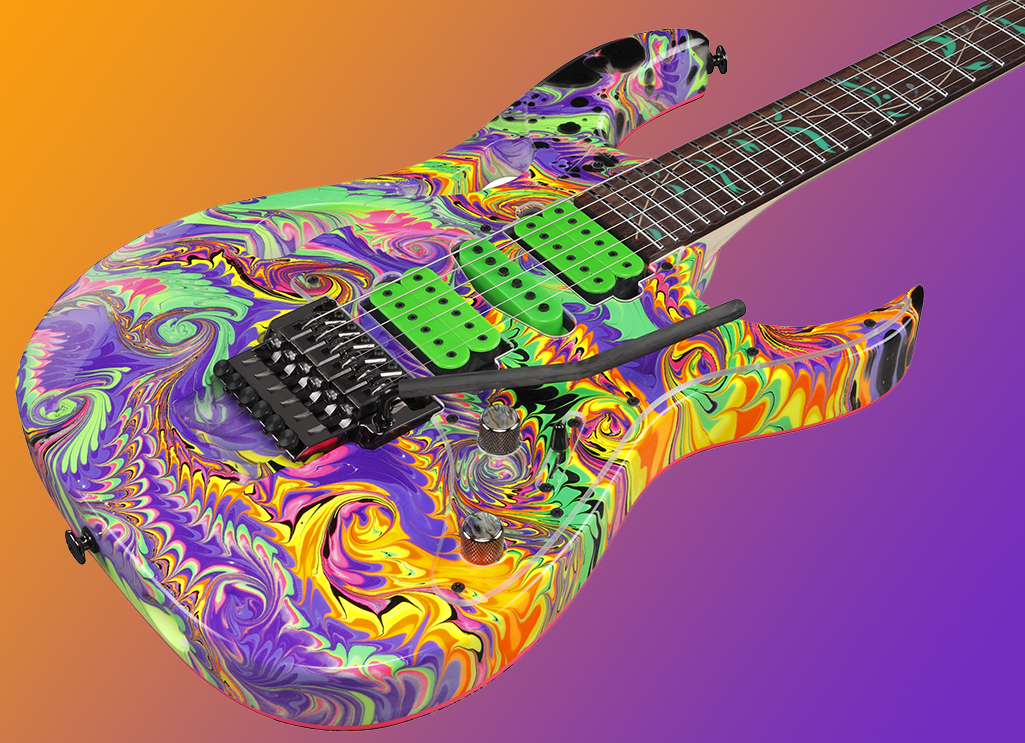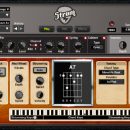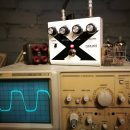The Morpheus DropTune and Capo pedals are exciting and unique effects in the oversaturated pedal market, attempting to solve some real challenges facing guitar players who might otherwise require numerous guitars at any given show just to accommodate various tuning requirements.
The DropTune pedal delivers on the promise of lowering the pitch of your entire guitar without having to drop tune the instrument. Whether you like to tune your entire guitar down a half step or a few full steps, this innovative pedal gives you instant access to these alternate tunings. This is especially handy if you only require dropped tunings on a handful of songs, as you don’t have to dedicate a single guitar or two to the task.
| Category | Value | Rating | ||||
| Features | 20% |
|
||||
| Usability | 25% |
|
||||
| Sound | 25% |
|
||||
| Documentation & Support |
10% |
|
||||
| Price | 20% |
|
||||
|
|
||||||
| OVERALL RATINGS: DropTune = 3.1 Capo = 2.8 3.6 stars or better: Outstanding, WIHO Award 3 stars or better: Worth considering 2 stars or better: Suited to specific needs 1 star or less: Not recommended |
||||||
Players with floating tremolos can rejoice in a solution like this because dropping your pitch even half a step ordinarily requires getting the guitar set up all over again. Drop a few whole steps and players start switching to heavier gauge strings to make up for some of the slack, requiring yet another trip to the guitar shop.
Using the DropTune, you can actual drop the pitch of your guitar into territory previously impossible for an electric guitar due to the physical impossibility of tuning the instrument that low — your strings would flop right off the fretboard!
The Capo pedal, as you might guess, heads the opposite direction with your guitar’s pitch and is intended to replace use of a physical capo. One huge advantage the Capo pedal makes over working with the real thing is that it resolves the issue of proper intonation. Anyone who has used a real capo knows that as they place it further up the neck, some strings invariably go sharp or flat and you may need to retune in between songs as you place the capo on different frets. Also, depending on the thickness of your guitar neck, the tension from your capo can pull notes sharp or flat. Morpheus Capo Pedal
With a single preferred guitar, you just adjust the tension on your capo once and forget it, but if you find yourself using the capo on multiple guitars with necks of differing thickness, the different tension against each neck will drive you crazy with the tuning being “off” on some guitars more than on others. Consider this another problem solved by the pedal.
Metal musicians will find another interesting use for the Capo pedal: If most of your songs are regularly performed in dropped tunings, you can use the Capo pedal to bring your guitar back up to standard pitch for the few songs that require traditional tuning.
The first question on everyone’s mind, of course, is just how good do these pedals sound? Can they replace “the real thing?” In general, they sound good enough to use in a variety of situations, enabling you to leave the extra guitar at home or to forget about your capo. But getting to the specifics of the sound quality, yes, there is an audible difference between the pedals approach vs. the real thing — sometimes subtle and sometimes not so subtle. For some players, this difference will be enough to make them stick with their capos and multiple guitars until the technology improves.
Depending on your musical application, though, the difference in tone quality is easy to overlook due to the benefits gained — these pedals solve some real problems for the gigging musician. If you only need to drop your tuning to C for one cover tune in a three-hour set, why go through the effort and expense of dedicating a guitar to that purpose? The person most likely to notice the difference in your tone will probably just be yourself. And who can resist the ability to effectively turn your capo On and Off going from one section of a song to another? This opens up some real creative possibilities.
Not content to be one-trick ponies, each pedal has unique properties in the effects department. The DropTune has a great sounding low octave effect that works beautifully on ‘60s and ‘70s classic rock material, and the Capo has a decent 12-string effect. But the Capo’s more unique effect may just be the fact that it unlocks your entire neck. If you routinely play songs with a capo at the fourth or fifth fret, you gain sonic access to higher frets than wouldn’t normally exist on your guitar, effectively reaching up to a virtual 29th fret or higher.
Features
The DropTune and Capo pedals share nearly identical features, just headed in opposite directions.
The DropTune pedal is capable of transposing the pitch of your guitar down as much as three and a half steps in half-step increments. It also has a full-octave drop for a classic Octaver effect.
The Capo pedal is capable of transposing the pitch of your guitar up as much as three and a half steps in half-step increments. On the high end, it includes a simulated 12-string effect.
 Both pedals are mono and run off of any 12 V DC (500 mAmp) power supply or a set of four AA batteries (thoughtfully included so you can get up and running immediately). A trim level on the rear lets you optimize the signal level from your guitar, while a three-bar indicator on the top of the pedal shows your level setting.
Both pedals are mono and run off of any 12 V DC (500 mAmp) power supply or a set of four AA batteries (thoughtfully included so you can get up and running immediately). A trim level on the rear lets you optimize the signal level from your guitar, while a three-bar indicator on the top of the pedal shows your level setting.
Illustrated on each pedal is either a set of notes (DropTune) or a virtual guitar neck (Capo), and stepping on the Up and Down buttons moves your tuning down by half steps or up fret by fret (also half steps). The numbers or notes on the pedal illuminate clearly to indicate where you have the pitch set.
There are two modes of operation. By default, you first set the pitch location and then toggle the effect On/Off with the right-most switch. While playing guitar with the effect engaged, though, the middle switch becomes a momentary effect toggle that lets you bypass the effect while depressed, and then the effect is re-engaged instantly when you lift your foot from the pedal.
A USB jack is provided to enable use of downloadable firmware updates. If you have an older DropTune pedal, be sure to download the version 1.2 update.
We would love to see the addition of a MIDI In and Thru port. It would be awesome if we could instantly select different pitch settings from a MIDI foot controller in our pro rigs while leaving these effects tucked away nicely on a shelf. While we’re dreaming, maybe we could request a rack version of the product with both pedals in one box under MIDI control!
Usability
DropTune
Basic operation of the DropTune was extremely straightforward. Set a pitch, turn it On/Off, and play.
Not to be confused with alternate tunings or single-string drop tunings, the DropTune lowers the pitch of all six strings – much like adding another 12 frets extending below the nut of your guitar. If you’re playing in the first position, you can use the DropTune to transpose to lower registers in half step increments, down as much as a full 12 steps, without the limitations of string slack or annoying fret buzz.
How low can you go, really? We’re not talking limbo, but you can go deep. There are sonic disadvantages as you stretch to lower registers, however. Only you can decide if the sound satisfies your creative need. We found a lot of usefulness in this pedal — it provided an alternative and simple solution for playing in lower registers that ordinarily would have required us to pack additional guitars for a gig or session.
We did experience some latency when playing with the pedal engaged, though. It sometimes felt as though the pitch shifting was occurring ever so slightly behind our playing rather than with our playing.
Capo
Basic operation of the Capo is just as simple as the DropTune. Set a pitch, turn it On/Off, and play. However, there’s a fundamental difference in the pedals’ use that impacts how easy they are to really use.
In the case of the DropTune, any guitar player familiar with tuning their entire guitar down will be right at home playing their favorite music, and the ability to instantly audition multiple dropped tunings at the stomp of a button is truly inspirational during the songwriting process (not to mention, flat-out useful).
The Capo pedal, though, is an entirely different animal if you’re using it to replace a physical capo. We found it a bit more challenging to play songs with the Capo pedal precisely because we didn’t have an actual capo on our guitar! With a real capo, you are shortening the physical length of your neck — effectively moving the headstock up and down, and those occasional eyes-to-guitar-neck glances confirm to your brain what and where you’re playing on the neck.
But if you routinely play multiple songs with a capo at different fret positions, thanks to the Capo pedal you’ll be performing every song in the open position, and your visual reference will no longer be relevant. We found playing familiar, capo-necessitating songs all from the open position to be really disorienting!
For a player using the Capo to bring drop tuned guitars back up to standard pitch, though, there is no confusion to deal with, and you should feel free to add back an additional half star to this section of our ratings.
We did experience some disturbing latency when playing with the pedal engaged, though. As we found with the DropTune, the Capo sometimes felt as though the pitch shifting was occurring slightly behind our playing rather than with it.
It should be noted that this pedal is really designed for use with electric guitars. When we tried to use the pedal with a Taylor acoustic guitar via its onboard electronics, it only took a few seconds before we realized the obvious issue: hearing your guitar acoustically while the pitch-effected sound is coming through your amp or p.a. system just doesn’t work!
Sound
If any change to your tone registers as unacceptable in your book, these pedals won’t be met with acceptance. With the present state of technology at this price point, they aren’t yet ready to replace your drop tuned or capo-adorned guitars, as they do make some subtle changes to your tone and guitar response. But if you’re willing to sacrifice a small amount of something in exchange for versatility and convenience, it’s hard to beat what these pedals bring to the table.
DropTune
The DropTune pedal provided good sound quality overall and opened up a whole new universe at the touch of a button. The only real issues we could identify had to do with slight latency from the pitch processing, and some additional compression of our tone.
Despite our complaint about the latency, the only one likely to notice it is you. But (most likely) due to some compression of the signal, there was a slight delay in note attack, and we think this contributed to a decrease of high-end frequencies. It was enough of a change to be noticeable to us when putting the pedal under studio-based scrutiny, but nobody would notice this difference in a live setting.
To be certain of this, we put the DropTune to use in a secret real-world test. We hid the unit behind our Bogner Ecstasy amp during a live gig and used it for one of our detuned songs. Usually, this song required significant detuning — low E down to D flat and the rest of the strings down a half step. In this application, we were able to physically tune the E down to D and then use the DropTune pedal to take everything down a half step. Nobody noticed any difference sonically, though they may have noticed how much quicker we were able to change our tuning for the song.
Taking the DropTune into lower registers (more than a couple of whole steps) provided the same challenges as with a string detune — muddy territory, especially without beefing up the string gauge on our guitar. Single note playing worked much better than full chording in the lower pitch drops, providing a more distinguishable sound than the muddy response we got playing full chords in lower territory.
In switching to an overdriven setting on our amp and using the DropTune to get into “typical” lower registers, the pedal really brought our tone down to the depths of hell. The sound quality remained consistent without the fret buzz and floppiness you would normally get from actually tuning down your guitar. Bottom line: Whatever subtle tone changes were experienced in the studio setting were not enough to offset the immense usefulness of the DropTune.
Capo
The Capo pedal sounded good overall, and it definitely resolved the physical issues that a real capo exposes on a guitar related to tuning/intonation. The less it was pushed, the better it sounded, and setting the virtual capo to replace a capo at up to the first three or four frets usually resulted in sounds that were perfectly acceptable within the context of a band setting.
Our problem with the sound was related to the latency we experienced, as the initial attack of our notes sometimes lacked the high-end sparkle that our acoustic tones played with a traditional capo typically offered. Depending on what kind of material we were playing, the impact on our tone was more or less obvious. Playing through some arpeggios, for example, it seemed like some notes would ring out brightly while others would sound slightly muted or muffled. In general, we experienced a diminished brightness and sparkle in our tone when directly compared to the sound of our guitars with traditional capos on the neck.
When used with distortion from our amp, the pedal offered similar sonic results, with a little less clarity in our tone. But the bottom line is that in a real-world test — playing within the rock band context, other musicians in the group didn’t notice or comment about the difference in our tone. Can we live with ourselves using a pedal in place of the physical capo? We’re still on the fence trying to answer this question, but it’s refreshing to know that the only person struggling with the decision will be the player, not the audience.
The twelve-string effect was usable, and made it easy to play lead lines just as if we had a twelve-string electric guitar. Although we wouldn’t trade our traditional twelve-string guitars for an effect pedal, when playing arpeggios, the Capo did provide a sound that casual listeners would mistake for the real thing, though it wasn’t very noticeable when strumming.
Documentation and Product Support
The DropTune and Capo pedals come with very good documentation that clearly explains the various settings and operation of each pedal. Of particular note: pay attention to optimizing the Trim Level in relation to your various guitars for best results.
Price
The DropTune and Capo pedals (MSRP $259) sell for approximately $200 a piece. Given that we know there’s room for the sound quality and response to improve in future generations of these innovative pedals, we think they’re a bit on the pricey side. $150 seems like a better street price in our minds to make this a much easier purchase to justify, particularly for the Capo pedal. We found the DropTune pedal a more useful device overall, though just slightly.
Contact Information
Morpheus
www.morpheusefx.com
| Evaluation Short-List |
|

